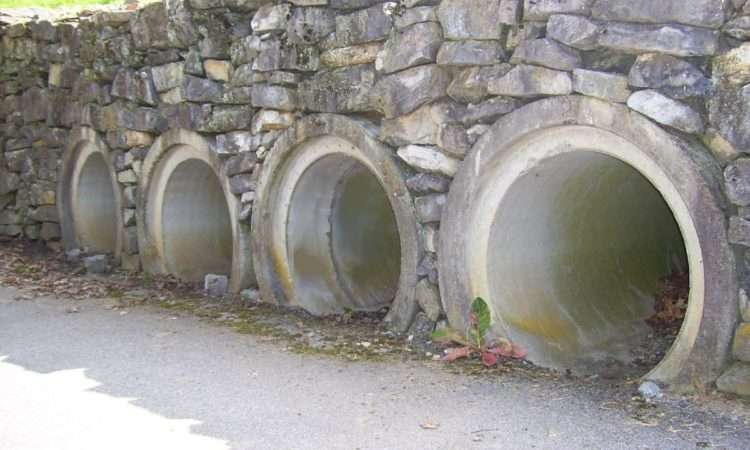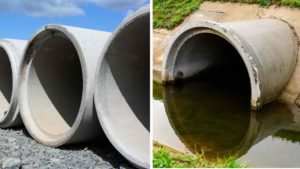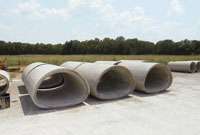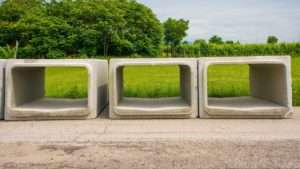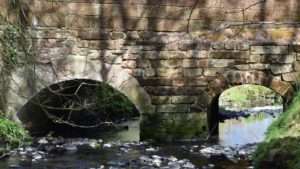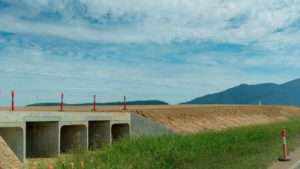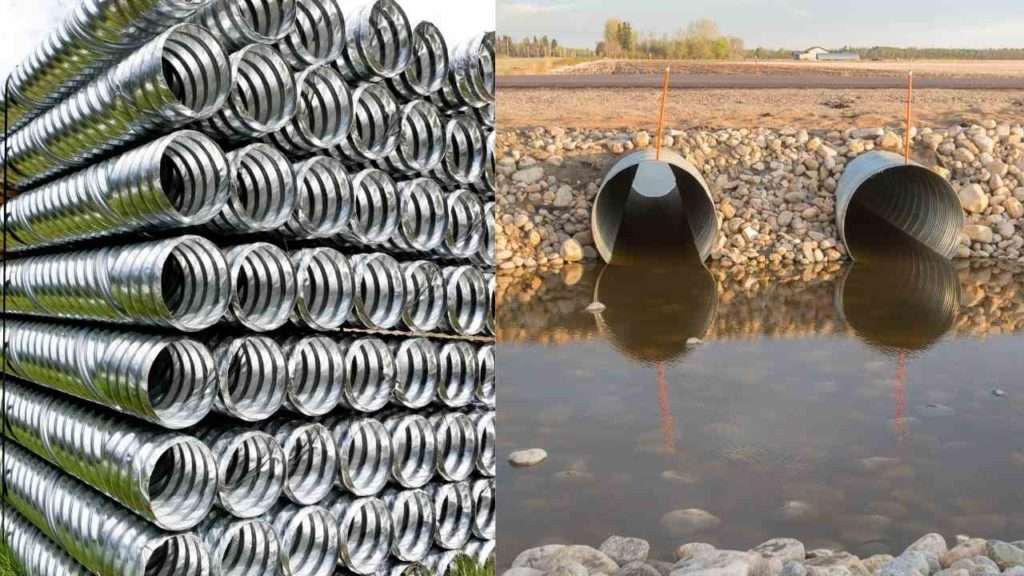The types of culverts to be deployed depends on the site conditions and the purpose of the culvert. Culverts are tunnel structures constructed beneath rail tracks or roadways to facilitate cross drainage or to convey electrical cables from one side to the other. It is completely encircled by ground or soil. Pipe, box, and arch culverts are the most common types of culverts deployed under roadways and railroads. They should run parallel to the ground. The culverts protect the road from erosive forces and other water-related concerns. Hydraulic, water surface elevation, roadway height, and other parameters influence culvert designs. Moreover, culverts are used to regulate the flow of water.
This article is about the meaning of culverts, the types of culverts, and their advantages.
What are culverts and types of Culverts?
A culvert is a permanent or temporary structure that enables water to flow beneath a road or railroad. It is best suited for locations where roads or railroads need to be built near existing rivers or canals without interfering with water movement. Generally, the length of the culvert should be 6 meters or less. As a result, they are quite large. Concrete, aluminium, and steel are among the materials used in the culvert’s construction. However, the material choice is influenced by criteria such as hydraulic efficiency, strength, cost, and installation technique. Concrete is preferred for culverts due to its strength and durability. Moreover, they are also more resistant to highly corrosive conditions.
Related posts from vincivilworld
Types of Materials for culverts construction
Culverts are similar to pipes but much larger in size. They are manufactured from a variety of materials and types of culverts based on materials are as follows.
- Concrete
- Steel
- Plastic
- Aluminium
- high-density polyethene
Culverts made of concrete are typically preferred. Concrete culvert types can either be reinforced or unreinforced. Culverts that are built on-site are known as cast-in-situ culverts. Precast culverts, which can be manufactured elsewhere, transported, and assembled on-site, are another possibility.
The aforementioned materials can be combined to create composite culvert types.
Different Types of Culverts
There are numerous types of culverts. The amount of water, the elevation of the road, the site’s condition, the area of water release, etc. are all taken into consideration while choosing the size and culvert types.
Most used culvert types are as follows
- Pipe Culvert
- Pipe Arc Culvert
- Box Culvert
- Arch Culvert
- Bridge Culvert/Slab culvert
- Metal Box Culvert
Pipe culverts types
A culvert is a covered hydraulic structure that conveys fluid. Pipe culverts are constructed by inserting a pipe into an excavated trench to convey water away. It is the most frequently used drainage system. Pipe-type culverts are fairly prevalent due to their economical cost and ease of installation. In terms of hydraulic performance, the round section is the best geometrical section. Pipe culverts, on the other hand, come in a variety of shapes, including elliptical, pipe arch, and others. In general, the shape of the culvert is governed by site constraints and conditions. The culverts could be single or multiple. For comparatively small discharges, circular precast concrete pipes and ductile iron pipes are commonly used.
Pipe Arch Culverts
Arch culverts are semi-circular in shape. They are appropriate for larger waterway openings with steady water flows wherein fish can benefit from a greater hydraulic advantage. However, need to provide a steady water flow. Fish or sewage in the drainage is easily moved to the outflow due to the arch shape, as there is no stocking at the intake or bottom of the channel. Depending on the need, these types of culverts can also be provided in multiple numbers. Additionally, they offer little clearance and are undoubtedly quite artistic. Pipe arches have a hydraulic advantage at low flows and are particularly beneficial for locations with limited headroom. The main advantages of pipe arch-type culverts are their light weight and ease of installation.
Box Culvert type
These culverts are used for intakes and outtakes, holding tanks, steam tunnels, corridor linkages, road crossings, service tunnels, and utility trenches. They are one of the most useful structures in modern construction and are common components in road and highway construction. These box culverts allow water to flow beneath roads and highways without interfering with traffic flow and serve as alternate animal crossings. Box culverts are rectangular or square in design, and they must be sturdy to endure traffic loads and harsh weather conditions. Because of this box culverts are constructed using Reinforced cement concrete. The most difficult aspect of building a box culvert is that it must be installed in a dry area with a firm base.
When a significant amount of water is anticipated, the strength of the concrete floor allows for a shift in the water flow direction. Box culverts may also be of the precast type. Circular concrete pipes are replaced by precast concrete box culverts. They have higher strength, can easily withstand greater water flow than standard pipes, and can drain extremely huge amounts of water. Compared to other types of culverts, box culvert installation is simpler and more practical.
Precast box culverts can be prepared in advance, and then installed in the locations required when the time comes.
Arch Culvert types
An arch culvert is constructed of metal, stone masonry, concrete, RCC, and other materials. Arch culverts are similar to pipe arch culverts, except in this instance an artificial floor is constructed underneath the arch. The arch culvert demands the construction of a superstructure, that comprises one or two segmental arches. It is frequently used for narrow passages. Contrary to box culverts, installation can be completed quickly and without disrupting the flow of the water, therefore water diversion is not necessary. The natural integrity of the wash bed is preserved by this type of culvert.
Similar to masonry bridges, arch culverts are economical, fast, and easy to construct. They benefit from the design-build advantage and improved hydraulic effectiveness. The arch culvert is also made of steel but it is very extortionate. The arch culverts are not provided with piers to the sides of the abutment
Slab culvert/Bridge Culvert
Bridge culverts are generally constructed on rivers and canals. They are also used as vehicle bridges. As a result, it is referred to as a multi-purpose culvert. Most foundations are built below the surface of the ground. A number of culverts are installed, and then a pavement surface is placed on top of them. Slab culverts and bridge culverts may have three sides or may just be flat slabs. Both sides of it are buried in the ground. These culverts, which are typically rectangular in shape, can take the place of box culverts if artificial flooring is not required. The typical span length is between 8′ and 48′. Being able to accommodate traffic on it, being the most expensive river crossing, being extremely sturdy, and got a very strong foundation.
The benefits of a bridge culvert are that it allows traffic to travel through it, it is the most expensive river crossing, it is very strong, and it has a very strong base. Because slab culverts don’t have bottom slabs, the normal flow of water is maintained, and the natural bottom substrate remains undisturbed. The slab culvert is safe for high-velocity vehicles because it has no sharp corners.
Metal Culvert
The metal box culvert is an economical alternative to bridges. These bridges are made of conventional structural plates or deep-corrugated structural plates. They are the ideal bridge replacement since they keep the same road grade level. Construction of a metal box culvert requires little time and is relatively easy to install. They are more durable and have a longer service life.
For projects that need larger diameter pipe than what Metal Culverts can manufacture (more than 144′′ diameters), Structural Plate and Aluminum box Culverts are ideal. This solution enables quick and simple installation at a fraction of the price and time that replacing a steel bridge would cost. Aluminium box culverts and structural plates are available for use in various applications, such as small bridge replacements, pedestrian passages, livestock underpasses, and stream enclosures. Structural Plate’s shape also helps maintain the natural environment in which pipes are installed. The arch shape allows wildlife to pass through without difficulty and can also leave natural stream beds intact.

